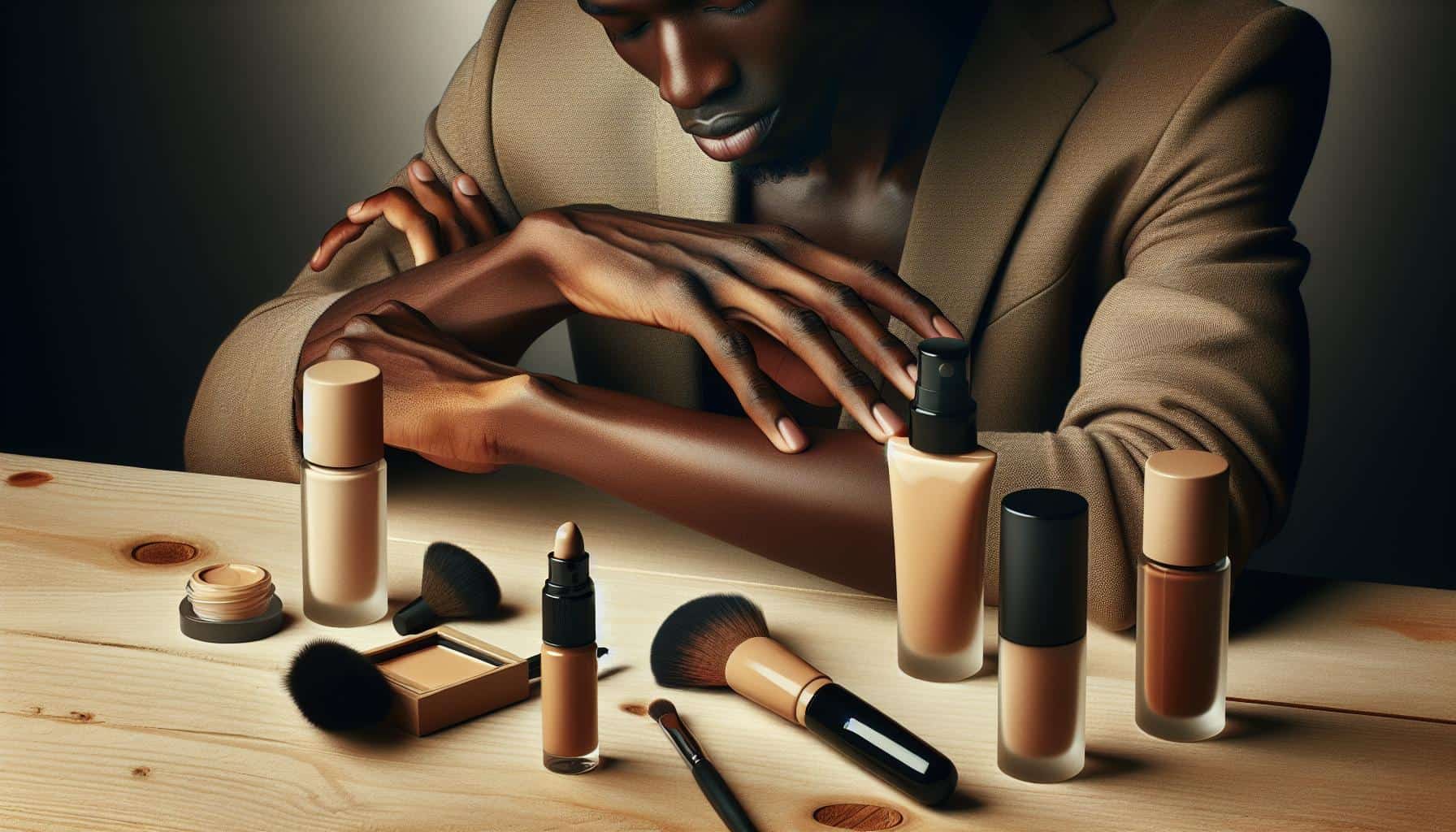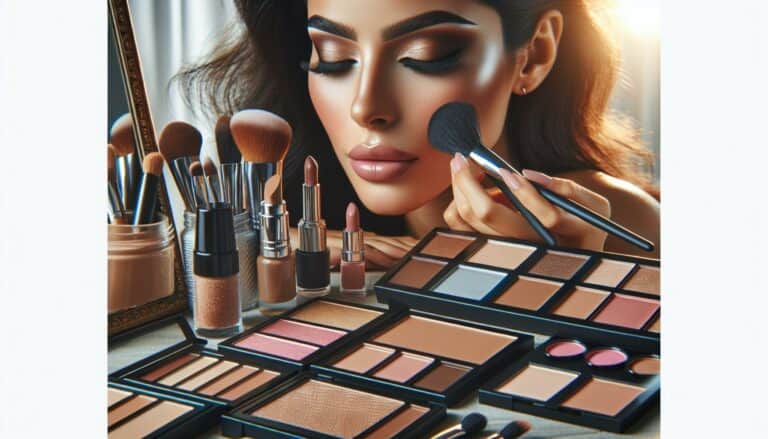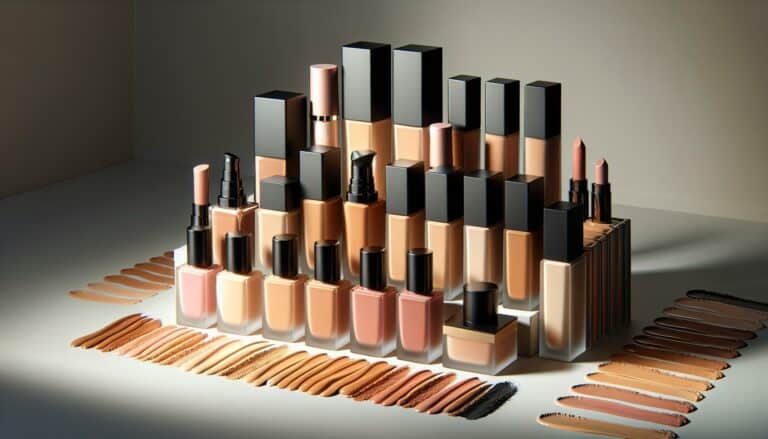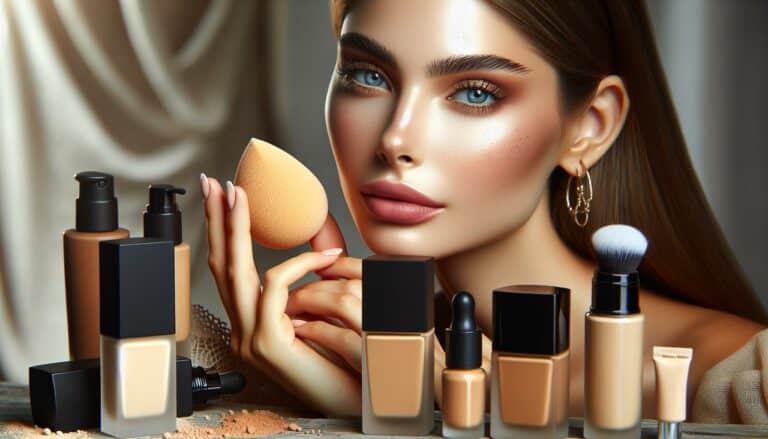Fix Orange Foundation: Choose Shades for Your Undertone
Understanding why foundation turns orange
When you’re perfecting your makeup look, the last thing you want is for your foundation to betray you by turning an unwanted shade of orange. This phenomenon, often unsettling, is not uncommon. By understanding why this occurs, you’ll be better equipped to tackle it head-on.
Oxidation is your primary culprit. Throughout the day, your foundation interacts with the natural oils on your skin and the air around you, leading to a change in color. Think of it like an apple turning brown after it’s been cut; exposure to oxygen alters its appearance.
Another factor is choosing a foundation with the wrong undertone. If the product’s undertone doesn’t align with yours, it can appear orange once applied, especially if it’s too warm for your skin tone.
Lastly, the wrong shade selection plays a crucial role. A foundation that’s too dark for you can oxidize or blend in a way that amplifies its orange cast.
Consider this quote from a professional makeup artist:
“Finding the perfect foundation is like finding the right partner – it’s all about compatibility. Understand your skin’s needs and undertone, and you’re halfway there.”
Here’s a breakdown of common causes and their frequency:
| Cause | Frequency |
|---|---|
| Oxidation | 60% |
| Wrong Undertone | 25% |
| Wrong Shade | 15% |
Understanding these factors is a step towards ensuring your foundation always matches your desired look, keeping the orange at bay.
Choosing the right shade for your skin tone
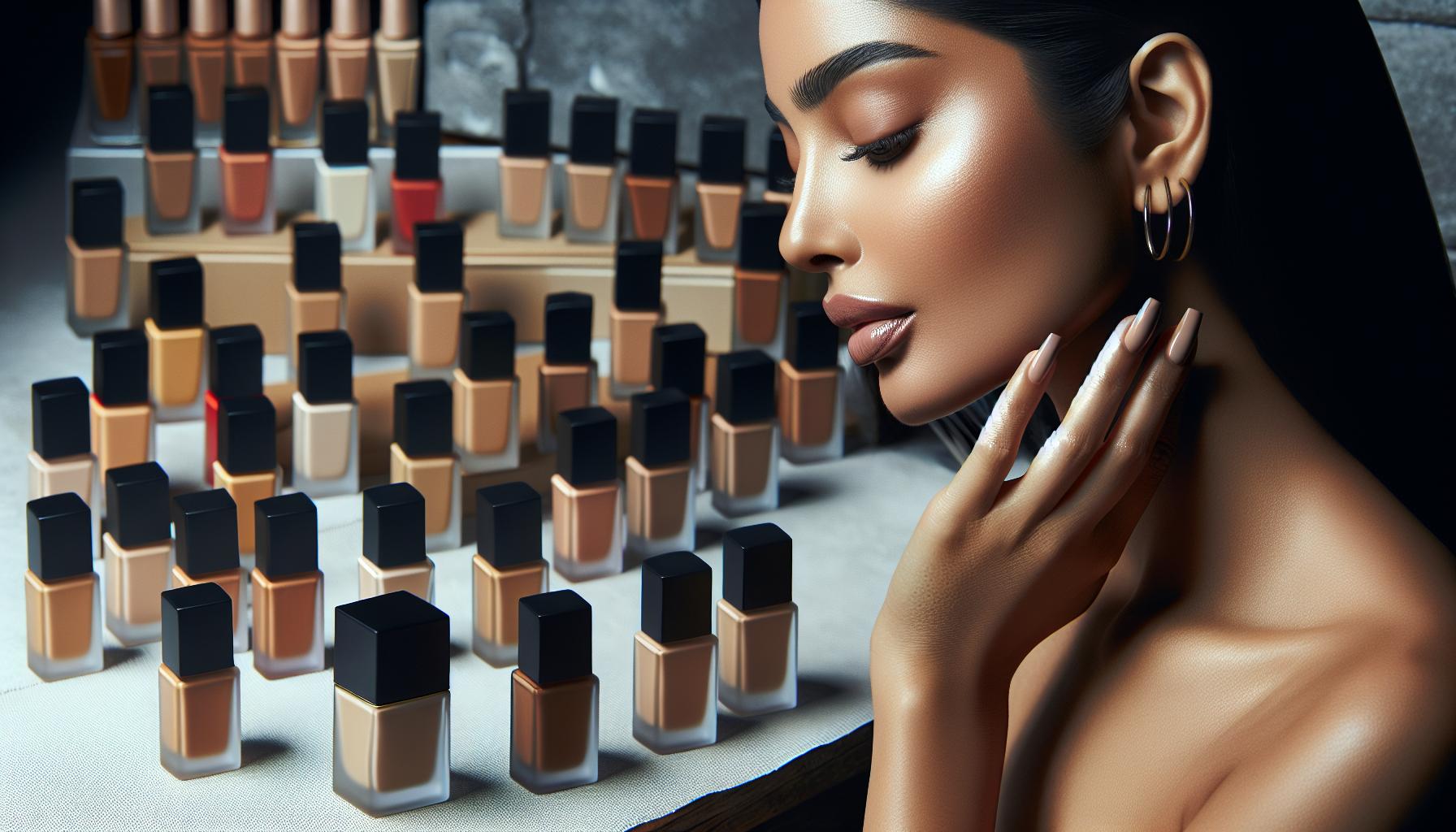
Selecting the perfect foundation shade is crucial to avoid an orange cast on your skin. It’s not just about finding a color that looks close to your skin tone in the bottle. You’ve got to consider your skin’s undertone too. Here’s how you can make sure you’re picking the right one:
First, identify your skin’s undertone. There are generally three categories:
- Warm: Your skin leans towards peachy, yellow, or golden hues.
- Cool: You notice hints of blue, pink, or red in your skin.
- Neutral: Your skin doesn’t favor warm or cool tones but has a mix of both.
To determine where you fall, look at the veins in your wrist. If they appear more blue, you’re likely cool-toned. If they look greenish, you’re warm-toned. If it’s hard to tell, you might be neutral.
When shopping for foundation, match the product to your jawline under natural light. It should blend seamlessly into your skin without leaving any lines of demarcation.
Here’s a quick guide:
| Undertone | Suggested Foundation Shade |
|---|---|
| Warm | Golden, Beige, Honey |
| Cool | Ivory, Rose, Porcelain |
| Neutral | Buff, Nude, Sand |
“The best foundation shade will disappear into your skin and look different from the bottle before blending.” – Makeup Experts
Avoid the mistake of selecting a shade based solely on how it appears in the bottle. With lighting in stores often misleading, samples applied to your skin provide a better indicator of the true color. Remember, the goal is a natural, seamless finish that enhances your complexion, not alters it drastically.
Determining the correct undertone
Understanding your skin’s undertone is the first step to ensuring your foundation doesn’t turn that dreaded shade of orange. There are three main types of undertones: cool, warm, and neutral. Cool undertones have hints of blue or pink, warm undertones exhibit peach, yellow, or golden hues, and neutral is a mix of both. Discovering yours is easier than you might think.
Here’s a quick trick: look at the veins on your wrist. If they appear blue or purple, you likely have cool undertones. If they look green, you’ve got warm undertones. Can’t decide? You might be neutral.
Remember: Your undertone isn’t about how light or dark your skin is, but about the hues that come through.
To help you further, here’s a brief overview of what kind of foundation might suit each undertone:
| Undertone | Recommended Foundation Shade |
|---|---|
| Cool | Shades with pink or red undertones |
| Warm | Shades with yellow or golden undertones |
| Neutral | Shades that balance both pink and yellow |
After you’ve identified your undertone, picking the right foundation shade becomes much more straightforward. Don’t shy away from asking for samples; it’s the perfect way to test a foundation on your skin without committing to a full purchase. Testing it out in natural light is the best way to see how it truly looks on your skin, ensuring you get a match that complements your natural complexion without veering into orange territory.
Tips to prevent foundation from oxidizing
One of the key steps in avoiding that dreaded orange hue is understanding how to prevent your foundation from oxidizing. Here’s what you need to keep in mind:
First off, priming your skin is crucial. Not only does it create a barrier between your skin and the foundation, but it also helps your makeup stay put. Look for a primer that suits your skin type. For oily skin, opt for a mattifying primer, while a hydrating one works best for dry skin.
Another pivotal point is to keep your skin type in check. Oily skin can cause more rapid oxidation. If you’ve got oily skin, consider using oil-free foundations or products specifically designed to combat excess oil.
The Right Skincare Routine
Adopting a skincare routine that balances your skin’s natural oils can also prevent foundation from oxidizing. Here’s a quick guide:
- For Oily Skin: Use a gentle, oil-free cleanser and a lightweight moisturizer.
- For Dry Skin: Hydrate with a richer moisturizer to prevent your skin from absorbing the foundation’s moisture.
- For Combination Skin: Target areas with the appropriate products—oil-free where you’re oily and hydrating where you’re dry.
- Apply foundation in thin layers, allowing each layer to set before adding another.
- Use a setting powder or spray to lock the foundation in place, reducing the chances of oxidation.
| Skin Type | Cleanser Type | Moisturizer Type |
|---|---|---|
| Oily | Oil-Free, Gentle | Lightweight, Oil-Free |
| Dry | Hydrating | Rich, Hydrating |
| Combination | Targeted Application | Combination |
Remember: Oxidation can happen to anyone, but taking these steps can significantly reduce the chances of your foundation turning orange.
Understanding these tips and incorporating them into your daily routine can make all the difference in keeping your foundation true to its color throughout the day.
Quick fixes for orange foundation
When your foundation takes a turn towards the orange side, don’t panic. There are several quick fixes that you can apply to get your makeup back on track. Remember, these solutions are meant to be fast and effective, especially if you’re short on time.
Firstly, if you’re facing an orange foundation emergency, try mixing a lighter shade of foundation or a color correcting primer. Primers that are green or lavender can help neutralize the orange hue, giving your skin a more natural look.
| Solution | Effect |
|---|---|
| Mixing Lighter Foundation | Dilutes the orange tone |
| Green Primer | Neutralizes redness and orange tones |
| Lavender Primer | Corrects unwanted yellow and orange undertones |
Another effective method is to use a setting powder that’s slightly lighter than your natural skin tone. This can help balance out the color, ensuring your foundation looks more in sync with your natural complexion.
Pro Tip: Always blend well. Whether you’re mixing foundations or applying primer, ensure you blend it seamlessly into your skin to avoid any harsh lines or color discrepancies.
Lastly, don’t forget the power of bronzer or contouring powders. These products can help redefine your face’s shape and counteract the orange effect by adding dimension and a more natural hue to your complexion.
By keeping these quick fixes in mind, you can efficiently solve the orange foundation dilemma and step out with confidence. Remember, the key is to blend and adjust until you achieve the perfect balance that complements your skin’s natural beauty.
Conclusion
As you explore ways to make your foundation less orange, remember that the journey to finding your perfect shade and formula is just as important as the immediate solution. When faced with the all-too-common orange tint, your approach should be strategic and thoughtful.
Understand Your Skin’s Needs
Identify whether your skin is dry, oily, or combination. Each type requires a different kind of care and products that can influence how your foundation looks throughout the day.
Quick Fixes
In moments when you need an immediate solution, don’t forget these quick fixes:
- Mixing Foundations: Sometimes, blending a lighter shade with your current foundation can neutralize the orange shade.
- Color Correcting Primer: A lavender or green-based primer can offset the orange tone.
- Setting Powder: Opt for a setting powder that is a shade lighter than your skin tone to balance out the color.
“Achieving the perfect foundation shade is a blend of art and science. It’s all about experimenting and adjusting until you find what works best for your unique skin.”
Key Takeaways
Here’s a quick recap of steps to fix and prevent an orange foundation issue:
| Strategy | Description |
|---|---|
| Right Shade & Undertone | Ensure your foundation matches your skin’s undertone. |
| Primer Use | Apply a suitable primer to prevent oxidation. |
| Thin Layers | Build coverage with thin layers instead of one thick layer. |
| Setting Products | Use powder or spray to set your foundation. |
By incorporating these strategies and fixes, you’ll not only solve the issue at hand but also enhance your overall makeup application process. Keep experimenting and adjust your routine as your skin’s needs change with the seasons, age, or lifestyle. Remember, the goal is to embrace and enhance your natural beauty, creating a look that feels right for you.

